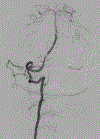Advances in Recurrent Stroke Prevention: Focus on Antithrombotic Therapies
- PMID: 35420910
- PMCID: PMC9015232
- DOI: 10.1161/CIRCRESAHA.121.319947
Advances in Recurrent Stroke Prevention: Focus on Antithrombotic Therapies
Abstract
The past decade has seen significant advances in stroke prevention. These advances include new antithrombotic agents, new options for dyslipidemia treatment, and novel techniques for surgical stroke prevention. In addition, there is greater recognition of the benefits of multifaceted interventions, including the role of physical activity and dietary modification. Despite these advances, the aging of the population and the high prevalence of key vascular risk factors pose challenges to reducing the burden of stroke. Using a cause-based framework, current approaches to prevention of cardioembolic, cryptogenic, atherosclerotic, and small vessel disease stroke are outlined in this paper. Special emphasis is given to recent trials of antithrombotic agents, including studies that have tested combination treatments and responses according to genetic factors.
Keywords: atrial fibrillation; endarterectomy, carotid; foramen ovale, patent; randomized controlled trial; stroke.
Figures



References
-
- Sacco RL, Kasner SE, Broderick JP, Caplan LR, Connors JJ, Culebras A, Elkind MS, George MG, Hamdan AD, Higashida RT et al. An updated definition of stroke for the 21st century: a statement for healthcare professionals from the American Heart Association/American Stroke Association. Stroke. 2013;44:2064–89. - PMC - PubMed
-
- Amarenco P, Bogousslavsky J, Caplan LR, Donnan GA, Wolf ME and Hennerici MG. The ASCOD phenotyping of ischemic stroke (Updated ASCO Phenotyping). Cerebrovasc Dis. 2013;36:1–5. - PubMed
-
- Ay H, Benner T, Arsava EM, Furie KL, Singhal AB, Jensen MB, Ayata C, Towfighi A, Smith EE, Chong JY et al. A computerized algorithm for etiologic classification of ischemic stroke: the Causative Classification of Stroke System. Stroke. 2007;38:2979–84. - PubMed
-
- Adams HP, Bendixen BH, Kappelle LJ, Biller J, Love BB, Gordon DL and Marsh EE. Classification of subtype of acute ischemic stroke. Definitions for use in a multicenter clinical trial. TOAST. Trial of Org 10172 in Acute Stroke Treatment. Stroke. 1993;24:35–41. - PubMed
-
- Mac Grory B, Flood SP, Apostolidou E and Yaghi S. Cryptogenic Stroke: Diagnostic Workup and Management. Curr Treat Options Cardiovasc Med. 2019;21:77. - PubMed
Publication types
MeSH terms
Substances
Grants and funding
LinkOut - more resources
Full Text Sources
Medical
Miscellaneous

